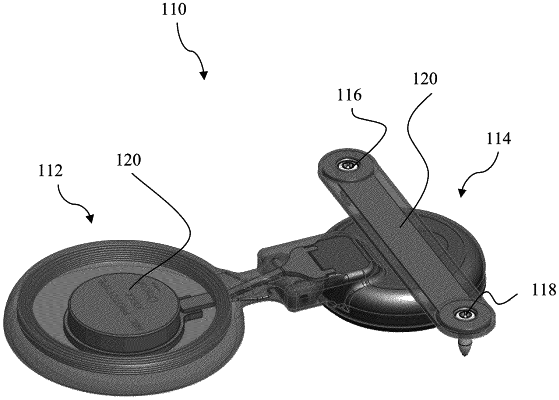| CPC H04R 25/606 (2013.01) [H04R 25/554 (2013.01); H04R 25/60 (2013.01); H04R 2225/51 (2013.01); H04R 2225/67 (2013.01)] | 20 Claims |

|
1. A hearing aid for placement on head of a user comprising:
a first part comprising:
an acoustic input transducer configured to convert ambient sound picked up at the ear of the user to an electric signal,
a signal processor configured to process the electric signal according to specifications of user into a processed electric signal, and
an output transducer configured to convert the processed electric signal into a transmission signal; and
a second part comprising:
a first housing including,
a receiver configured to receive the transmission signal, and
a first magnet which is surrounded by a reception coil in said receiver;
a second housing including,
a transducer configured to convert the transmission signal into an output signal which is provided to the user; and
two flanges extending away from the second housing, the two flanges located at substantially opposite sides of the second housing, where each of the two flanges is configured to fixate the second part to the skull bone of the user by means of a singular bone engaging screw,
wherein the two flanges are incorporated at respective ends of a ridged beam extending across the second housing and configured to be tightened against the second housing and towards the skull bone of the user by the means of bone engaging screws so that the ridged beam maintains contact with the second housing across substantially an entire face of the second housing.
|